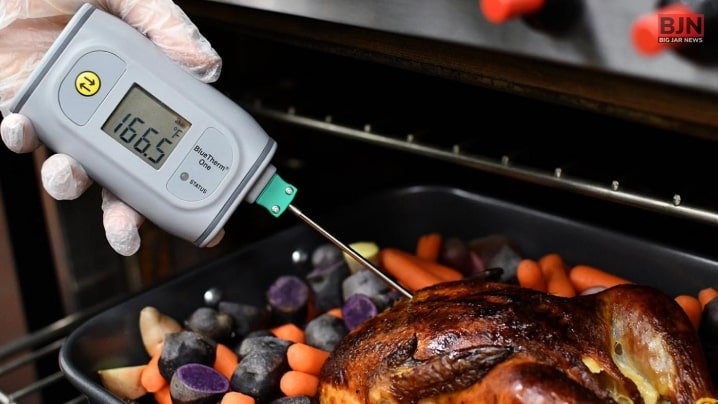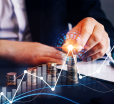Which Food Was Received In The Temperature Danger Zone?

Table Of Contents
Do you know why many food packets come with the statement saying, “Store in cool and dry places?” Why do these food items need to be stored in cool temperatures? Have you asked yourself what will happen if you store them in the opposite temperatures?
A temperature danger zone refers to temperatures where bacteria will start thriving on the food, Therefore, once bacteria start thriving, the food will slowly begin to rot.
Therefore, do you want to learn which food was received in the temperature danger zone? If you want to, then read this post till the end.
What Is The Temperature Danger Zone?

The temperature danger zone is a range of temperatures where bacteria can grow and thrive. The USDA states this temperature range is 40-140°F (4-60°C). Bacteria may multiply by two within this temperature range in approximately 20 minutes.
Foodborne pathogens like Salmonella and E. coli can develop when some foods are kept within this temperature range for an extended period of time, which could make you sick if you consume them.
Bacterial development may be stopped by storing perishable goods in your refrigerator and freezer at the proper temperatures. The most dangerous bacteria can be eliminated by adequately cooking your food.
Perishable foods should be stored at temperatures above 140 degrees Fahrenheit or below 40 degrees Fahrenheit (higher than 60 degrees Celsius or less than 4 degrees Celsius).
Types Of Food And Their Temperature Ranges
Even though some experts in food safety claim that some nonperishable foods can be kept at room temperature without going wrong, you still need to keep many foods in a safe temperature range to stop bacteria growth.
When perishable items are kept in kitchen areas other than the fridge or freezer, they may become dangerous to consume if the temperature rises beyond 40°F (4.4°C). This is the temperature danger zone for cottage cheese and potato salad temperature danger zone.
Seafood, poultry, meat, eggs, dairy, and prepared leftovers are examples of perishable foods. To keep you from suffering any digestion problems, certain foods must be held at a specific temperature.
Regarding which food was received in the temperature danger zone, the following table suggested internal cooking temperatures when necessary and storage temperatures for perishable goods.
| Food | Storing Temperatures | Cooking Temperatures |
| Leftovers (stuffing, casseroles, etc. | 40°F (4.4°C) or below, or frozen at 0°F (-17.7°C) or below | 165°F (73.8°C) |
| Fresh Fruits and Vegetables | 40°F (4.4°C) or below, or frozen at 0°F (-17.7°C) or below | – |
| Dairy Products | 40°F (4.4°C) or below, or frozen at 0°F (-17.7°C) or below | – |
| Egg | 40°F (4.4°C) or below, or frozen at 0°F (-17.7°C) or below | 160°F (71.1°C) |
| Fish and Shellfish | 40°F (4.4°C) or below, or frozen at 0°F (-17.7°C) or below | 145°F (62.8°C) |
| Poultry | 40°F (4.4°C) or below, or frozen at 0°F (-17.7°C) or below | 165°F (73.8°C) |
| Ground Meat | 40°F (4.4°C) or below, or frozen at 0°F (-17.7°C) or below | 160°F (71.1°C) |
| Beef, pork, lamb, veal, steaks, and chops | 40°F (4.4°C) or below, or frozen at 0°F (-17.7°C) or below | 145°F (62.8°C) and allow to rest for at least 3 minutes |
| Ham, fresh or smoked (uncooked) | 40°F (4.4°C) or below, or frozen at 0°F (-17.7°C) or below | 145°F (62.8°C) and allow to rest for at least 3 minutes |
Remember that each perishable item may only be stored briefly at temperatures of 40°F (4.4°C) or below in the refrigerator. For instance, food safety professionals advise keeping fresh poultry in the fridge for 2 days, but raw eggs in the shell can be stored there for 5 weeks.
Should I Eat Food Stored At Unsafe Temperatures?
Each individual is at some risk of contracting a foodborne disease. The risk of significant consequences is higher for some populations, though. The following groups are most at risk for substantial consequences from foodborne illnesses:
- Elderly adults, babies and young children, pregnant women, and immunocompromised individuals, such as those with cancer and HIV.
- When these groups become infected with foodborne pathogens like Listeria monocytogenes, they will likely experience major problems.
After contracting foodborne pathogens such as Listeria monocytogenes, these groups are more likely to experience severe consequences. This is why it’s essential to learn which food was received in the temperature danger zone.
For instance, the U.S. Department of Agriculture (USDA) advises that pregnant women and immunocompromised individuals eat items like hot dogs or deli meats only if warm to 165°F (73.8°C) or are steaming hot to prevent Listeria infection. These populations may die from Listeria monocytogenes infection, which can also cause pregnancy problems like miscarriages.
For these reasons, medical professionals advise pregnant women to avoid high-risk meals like raw shellfish, deli salads, and raw meat. Even though it may not happen often, you should consider your safety and follow food storage and handling instructions to minimize your risk.
How Can I Keep My Food Safe?

You can take practical actions to make your food safe to consume, even if it’s hard to avoid exposure to hazardous foodborne diseases altogether. Regarding which food was received in the temperature danger zone, Here are some quick ways to prepare and cook food safely at home.
- First and foremost, try keeping warm food warm, preferably above 140°F (60°C).
- Conversely, keep cold foods cold, preferably around 40°F (4°C).
- Whenever you keep meat and fish, always cook them at safer internal temperatures.
- If there are any leftovers, always refrigerate them within 2 hours of cooking, preferably at 40°F (4°C).
- When you eat leftovers, reheat them until steam comes out, preferably at 165°F (73.8°C).
- Always ensure that your refrigerator has a set temperature of 0°F (-17.7°C) or below, or 40°F (4.4°C).
- Whenever you store any food (both cooked and uncooked), store them in sealed containers.
As you can see, avoiding the danger zone concerning perishable food is crucial for lowering your chance of contracting a foodborne disease. Remember to wash your hands and sanitize kitchen surfaces in addition to the primary suggestions listed above to prevent cross-contamination.
Which food was received in the temperature danger zone?
The danger zone is between 40 and 140 °F (4 and 60 °C), where germs may flourish and develop. To keep your food safe, keeping perishable goods away from the risk area is essential.
Therefore, always maintain a temperature difference between hot and cold items. Cook perishables to safe internal temperatures to keep items from remaining in the danger zone.
Tags:
You May Also Like

December 23, 2022
Factors That Might Prevent You From Getting A Green Card

February 6, 2021























